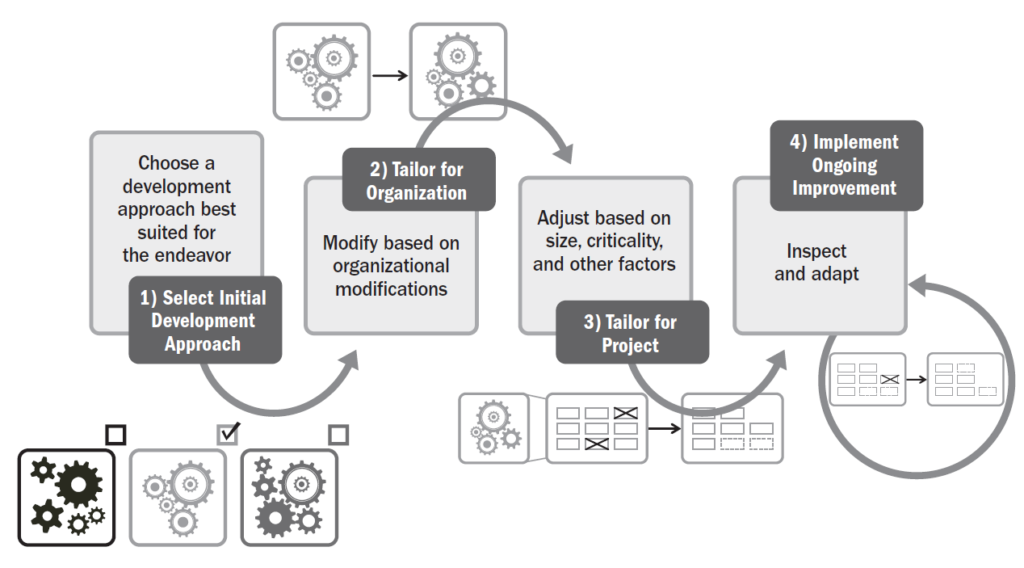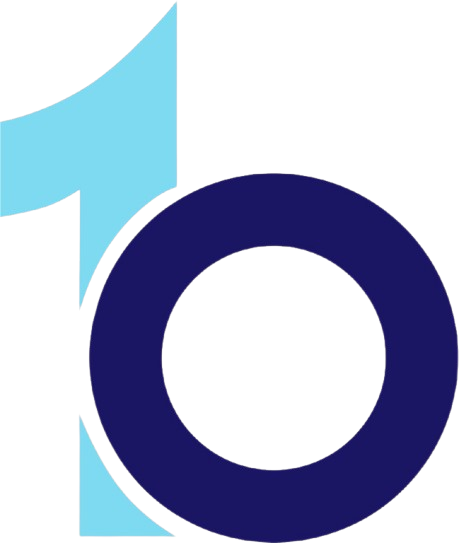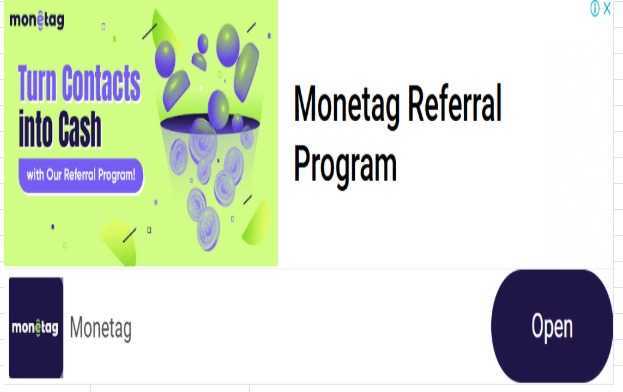Tailoring – Diagnostics
Customizing Project Health Assessments for Effective Project Management
In project management, being able to recognize issues early and make informed decisions is often the difference between a successful project and a failed one. This is where diagnostics come into play. Diagnostics in project management refer to the methods, tools, and processes used to assess project performance, identify problems, monitor risks, and guide necessary corrective actions.
With the shift to a more principle-based and performance domain-focused framework in the PMBOK® Guide – Seventh Edition, tailoring has become a core component of modern project management. Tailoring means adjusting processes, methods, tools, and practices to fit the unique needs of a specific project. When it comes to diagnostics, tailoring allows project managers to customize monitoring and evaluation practices based on project type, size, approach, environment, and stakeholder expectations.
This blog explores the importance of tailoring diagnostics, key considerations, strategies for implementation, and how this approach helps ensure accurate project health checks and better decision-making.
Understanding Diagnostics in Project Management
Diagnostics are essentially a set of project health indicators and performance monitoring tools. These tools help project managers and stakeholders understand:
- Is the project on track?
- Are key deliverables being completed on time?
- Are we staying within scope, budget, and schedule?
- Are risks being mitigated?
- Is the team’s performance aligned with expectations?
- Are stakeholders satisfied?
Diagnostics might include:
- Key performance indicators (KPIs)
- Status reports
- Risk and issue logs
- Earned Value Management (EVM)
- Stakeholder feedback mechanisms
- Team retrospectives
- Dashboards and real-time analytics
Effective diagnostics provide the necessary early warning signs so that corrective actions can be taken before issues escalate.
Why Tailor Diagnostics?
Projects vary widely. A diagnostic method that works for a software development sprint may be unsuitable for a regulatory compliance project. Tailoring helps ensure diagnostics are:
- Relevant: Only measure what matters for that specific project.
- Efficient: Avoid over-monitoring or collecting unnecessary data.
- Responsive: Provide real-time and actionable insights.
- Aligned: Match stakeholder expectations and organizational capabilities.
Without tailoring, project teams may face either data overload or blind spots—both of which can impair decision-making.
Key Factors to Consider When Tailoring Diagnostics
1. Project Type and Complexity
Complex projects with multiple dependencies and high risk may require more rigorous and frequent diagnostics than smaller or routine projects. Tailor the level of diagnostics based on:
- Project duration
- Number of stakeholders
- Regulatory requirements
- Technological uncertainty
- Organizational impact
Example: A multi-year construction project may require monthly milestone reviews and EVM analysis, whereas a marketing campaign might only need weekly performance summaries.
2. Development Approach
The chosen development approach (predictive, agile, hybrid) significantly influences diagnostics.
- Predictive projects: Emphasize variance tracking (cost, schedule, scope), milestone reviews, and formal reports.
- Agile projects: Use metrics like velocity, burndown charts, backlog status, and team retrospectives.
- Hybrid projects: Combine predictive metrics for governance with agile diagnostics for delivery tracking.
Tip: Tailor the indicators to the approach. Don’t impose rigid tracking on agile teams or ignore structure in predictive projects.
3. Stakeholder Information Needs
Different stakeholders care about different diagnostics. A sponsor may want high-level outcome-focused summaries, while the PMO may need detailed schedule and budget data.
Tailoring diagnostics means:
- Understanding what information each stakeholder values
- Delivering it in the appropriate format and frequency
- Avoiding unnecessary details that clutter decision-making
Example: Clients may prefer visual dashboards showing delivery progress, while internal managers may require detailed variance reports.
4. Organizational Maturity and Tool Availability
Tailor diagnostics based on the tools available and the organization’s ability to use them effectively.
- High-maturity organizations: May use enterprise-level project tracking software, integrated dashboards, and real-time analytics.
- Low-maturity environments: Might rely on spreadsheets, manual reporting, and periodic status meetings.
Tip: Don’t force complex tools into an environment where simpler methods would be more effective and well-received.
Strategies for Tailoring Diagnostics
1. Identify Success Criteria and Key Indicators
Start by identifying what success looks like for your project. Then, define metrics that reflect progress toward those outcomes.
Examples of tailored KPIs:
- Customer satisfaction scores (for service projects)
- Regulatory compliance status (for legal/finance projects)
- Velocity and cycle time (for agile product development)
- Cost Performance Index (CPI) and Schedule Performance Index (SPI)
2. Establish Diagnostic Cadence
Set an appropriate frequency for monitoring and evaluation:
- Daily (standups, Kanban board updates for agile teams)
- Weekly (sprint reviews, team status updates)
- Monthly/Quarterly (executive reports, stakeholder meetings)
Tailor the frequency based on:
- Project pace
- Stakeholder availability
- Risk level
Tip: Align reporting cycles with project milestones or iteration cycles.
3. Select Tailored Tools and Techniques
Use the tools that align with your diagnostics strategy.
- Dashboards (e.g., Power BI, Tableau)
- PM tools (e.g., Jira, Asana, Trello, MS Project)
- Risk logs and issue trackers
- Performance surveys or feedback forms
Choose tools that:
- Match the team’s skill level
- Integrate with existing systems
- Provide flexibility for tailored metrics
4. Incorporate Qualitative Feedback
Not all valuable insights come from numbers. Tailor diagnostics to include qualitative data, especially in projects involving customer experience, innovation, or cultural change.
- Team retrospectives
- Stakeholder interviews
- User testing feedback
- Lessons learned sessions
Tip: Combine quantitative and qualitative diagnostics for a fuller picture of project health.
5. Use Visual Reporting and Dashboards
Tailor the presentation of diagnostics to ensure insights are easily understood and actionable. Use:
- Traffic light indicators (Red-Amber-Green)
- Trend charts
- Heat maps
- Pie and bar graphs
Tip: Keep dashboards uncluttered and focused on decision-driving data.
Case Example: Tailoring Diagnostics in a Digital Transformation Project
A retail company is undergoing a digital transformation initiative involving e-commerce upgrades, mobile app development, and backend integration. The project uses a hybrid delivery approach.
Tailored Diagnostics Strategy:
- Agile teams: Track sprint velocity, backlog size, and defect rates.
- Backend integration: Use milestone completion and earned value reports.
- Executive dashboards: Provide combined views of agile progress and milestone status.
- Stakeholder updates: Monthly reviews focused on business value delivery and customer feedback.
This tailored approach ensures diagnostics are relevant, audience-specific, and aligned with project success criteria.
Benefits of Tailored Diagnostics
- Faster issue identification
- Better stakeholder communication
- More accurate progress tracking
- Focused decision-making
- Improved adaptability and responsiveness
Tailoring helps teams cut through the noise and focus on what really matters, enabling more agile and value-driven project management.
Conclusion
Tailoring diagnostics is not about creating complexity—it’s about creating clarity. By aligning diagnostic tools, indicators, and frequencies with the unique needs of a project, teams can gain better insight into performance and make smarter decisions.
In line with the PMBOK® Guide – Seventh Edition’s emphasis on adaptability and context-specific tailoring, customizing your diagnostic approach ensures that project health monitoring supports—not hinders—delivery and value realization.
In the end, the goal isn’t to measure everything—it’s to measure the right things, at the right time, for the right people, in the right way.



